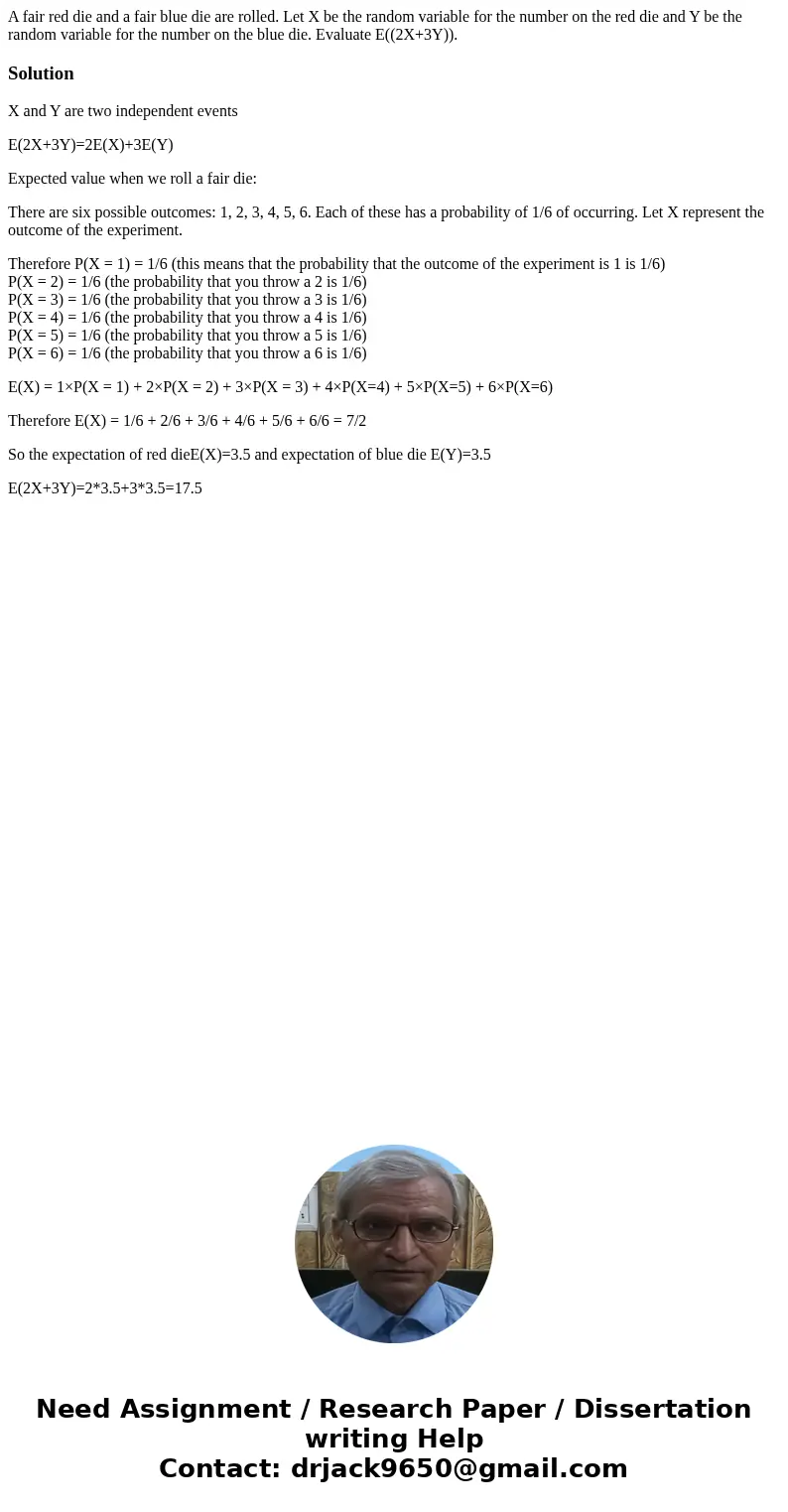A fair red die and a fair blue die are rolled Let X be the r
A fair red die and a fair blue die are rolled. Let X be the random variable for the number on the red die and Y be the random variable for the number on the blue die. Evaluate E((2X+3Y)).
Solution
X and Y are two independent events
E(2X+3Y)=2E(X)+3E(Y)
Expected value when we roll a fair die:
There are six possible outcomes: 1, 2, 3, 4, 5, 6. Each of these has a probability of 1/6 of occurring. Let X represent the outcome of the experiment.
Therefore P(X = 1) = 1/6 (this means that the probability that the outcome of the experiment is 1 is 1/6)
P(X = 2) = 1/6 (the probability that you throw a 2 is 1/6)
P(X = 3) = 1/6 (the probability that you throw a 3 is 1/6)
P(X = 4) = 1/6 (the probability that you throw a 4 is 1/6)
P(X = 5) = 1/6 (the probability that you throw a 5 is 1/6)
P(X = 6) = 1/6 (the probability that you throw a 6 is 1/6)
E(X) = 1×P(X = 1) + 2×P(X = 2) + 3×P(X = 3) + 4×P(X=4) + 5×P(X=5) + 6×P(X=6)
Therefore E(X) = 1/6 + 2/6 + 3/6 + 4/6 + 5/6 + 6/6 = 7/2
So the expectation of red dieE(X)=3.5 and expectation of blue die E(Y)=3.5
E(2X+3Y)=2*3.5+3*3.5=17.5

 Homework Sourse
Homework Sourse